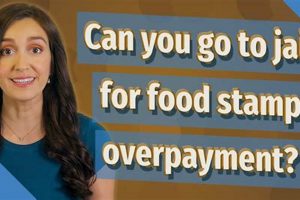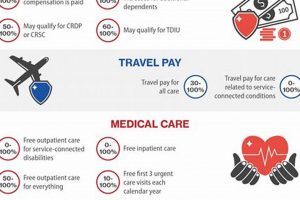Eligibility for the Supplemental Nutrition Assistance Program (SNAP) in Iowa, a federal initiative aimed at combating food insecurity, is significantly determined by household financial resources. These criteria define the maximum allowable earnings a family or individual can receive to qualify for food assistance benefits. These financial thresholds are adjusted based on household size and are subject to periodic updates by the state, reflecting changes in the cost of living and federal policy. For example, a single-person household has a lower income limit than a household with multiple dependents.
Adherence to these established benchmarks ensures that resources are directed towards those most in need, providing a crucial safety net for vulnerable populations. The framework is not static; it evolves in response to economic fluctuations and legislative changes. Historically, these measures have played a vital role in mitigating the impact of poverty and promoting nutritional well-being across the state, enabling low-income families to access essential food resources and improve their overall quality of life.
The following sections will detail the specific numerical thresholds, explore deductions that may reduce countable income, and outline additional eligibility requirements beyond just earnings. Furthermore, it will address how to apply for SNAP benefits in Iowa and where to find relevant resources for additional support and information.
Understanding the financial requirements for the Supplemental Nutrition Assistance Program (SNAP) in Iowa is crucial for determining eligibility. The following points provide guidance on navigating these regulations.
Tip 1: Gross Income Limits: Verify that the household’s total earnings before deductions do not exceed the established limits, which vary based on household size. Consult the most recent Iowa Department of Health and Human Services publications for precise figures.
Tip 2: Net Income Limits: Even if gross income is above the threshold, net income, calculated after allowable deductions, may qualify the household. Familiarize yourself with these potential deductions.
Tip 3: Standard Deduction: All households are eligible for a standard deduction, which reduces countable income. This amount is set by the federal government and adjusted periodically.
Tip 4: Earned Income Deduction: Individuals with earned income can deduct 20% of their gross earned income. This incentivizes employment and reduces the calculated income used for eligibility.
Tip 5: Dependent Care Deduction: Expenses paid for the care of a child or other dependent to enable a household member to work or attend training or education programs are deductible. Accurate records of these costs are essential.
Tip 6: Medical Expense Deduction: Elderly or disabled individuals may deduct certain medical expenses exceeding $35 per month. Documentation of these costs, such as receipts and insurance statements, is necessary.
Tip 7: Housing Costs Deduction: Shelter costs exceeding 50% of the household’s income after other deductions may be deductible, up to a limit. This includes rent, mortgage payments, property taxes, and homeowner’s insurance. Utility costs can also be included.
Understanding and accurately calculating these deductions is paramount for determining potential eligibility for SNAP benefits in Iowa. Careful attention to detail can significantly impact the final determination.
Consulting with a local Iowa Department of Health and Human Services office or a qualified social services agency can provide personalized guidance and ensure accurate benefit calculations. Understanding “income guidelines for iowa food stamps” it is the initial point to get help from the government.
1. Gross Monthly Income
Gross Monthly Income serves as a primary determinant within the “income guidelines for iowa food stamps,” representing the total earnings of a household before any deductions. Its significance stems from its initial role in assessing eligibility; it acts as a preliminary filter for prospective SNAP recipients.
- Initial Eligibility Assessment
The “income guidelines for iowa food stamps” require that a household’s Gross Monthly Income be below a certain threshold, determined by household size. Failing to meet this initial criterion often results in immediate ineligibility, regardless of other circumstances. For example, if a family of four earns $4,000 gross monthly, but the limit is $3,500, they would typically be deemed ineligible at this stage.
- Impact on Net Income Calculation
While a household’s Gross Monthly Income must fall below a certain level, the subsequent calculation of Net Income, which accounts for deductions like housing costs, medical expenses, and dependent care, plays a crucial role in final eligibility. The higher the Gross Monthly Income, the lower the potential for qualifying deductions to bring the Net Income below the threshold, directly impacting benefit amounts.
- Variations by Household Size
The “income guidelines for iowa food stamps” scale Gross Monthly Income limits according to the number of individuals within a household. Larger households are permitted a higher Gross Monthly Income cap, acknowledging the increased financial demands of supporting more people. A single-person household will have a significantly lower threshold than a family of five, reflecting differing living expenses.
- Relationship to Poverty Levels
The established Gross Monthly Income limits under the “income guidelines for iowa food stamps” are closely tied to the Federal Poverty Level (FPL). These limits are often expressed as a percentage of the FPL, serving as a benchmark for determining financial need. Adjustments to the FPL annually can subsequently impact the Gross Monthly Income thresholds for SNAP eligibility in Iowa.
The interplay between Gross Monthly Income, household size, allowable deductions, and the Federal Poverty Level underscores the complexity of the “income guidelines for iowa food stamps.” While Gross Monthly Income serves as the initial assessment point, a comprehensive evaluation incorporating all relevant factors is necessary to determine final SNAP eligibility and benefit levels in Iowa.
2. Net Income Calculation
Net Income Calculation is a pivotal element within the “income guidelines for iowa food stamps,” representing the income remaining after deducting specific allowable expenses from the Gross Monthly Income. This figure, rather than gross income alone, is used to determine final eligibility and benefit amounts, recognizing that certain unavoidable expenses can significantly reduce a household’s available resources.
- Standard Deduction Impact
The standard deduction is a fixed amount subtracted from Gross Monthly Income, irrespective of a household’s specific expenses. This deduction is designed to simplify the calculation process and account for basic living expenses. For instance, a standard deduction of $184 for all household sizes in Iowa reduces the countable income, increasing the likelihood of SNAP eligibility, particularly for households with modest incomes.
- Earned Income Deduction Influence
Households with earned income are permitted to deduct 20% of their gross earned income from their total income. This provision incentivizes employment and acknowledges the work-related costs incurred by working individuals and families. This deduction directly lowers Net Income, potentially enabling households to meet the “income guidelines for iowa food stamps” requirements and receive benefits.
- Dependent Care Deduction Application
Expenses related to the care of a child or other dependent, allowing a household member to work or attend training/education programs, are deductible from Gross Monthly Income. This provision recognizes the financial burden of dependent care and its impact on a household’s ability to support itself. For example, if a single parent spends $300 monthly on childcare to work, that amount is deducted, lowering Net Income and potentially qualifying them for SNAP.
- Excess Shelter Deduction Consideration
Households may deduct shelter costs (rent, mortgage, property taxes, utilities) that exceed 50% of their income after other applicable deductions. A cap may be applied to this deduction, depending on the household’s circumstances. This deduction acknowledges the significant portion of income dedicated to housing expenses, particularly in high-cost areas, further reducing Net Income and impacting SNAP eligibility and benefit levels under the “income guidelines for iowa food stamps.”
The accurate calculation of Net Income, incorporating these deductions, is essential for determining eligibility for SNAP benefits in Iowa. The “income guidelines for iowa food stamps” heavily rely on this Net Income figure, ensuring that benefits are directed towards households facing the greatest financial challenges, accounting for both income and unavoidable expenses. The interplay of these deductions can significantly alter eligibility outcomes, emphasizing the importance of understanding and properly documenting all applicable expenses.
3. Household Size Matters
The number of individuals residing within a household is a fundamental factor influencing eligibility for the Supplemental Nutrition Assistance Program (SNAP) in Iowa. Under the “income guidelines for iowa food stamps,” the permissible income thresholds and subsequent benefit levels are directly proportional to the number of individuals the income must support. This relationship underscores the program’s intent to provide adequate nutritional assistance based on household needs.
- Increased Financial Strain with Larger Households
Larger households inherently face greater financial demands for essential needs, including food, housing, and clothing. The “income guidelines for iowa food stamps” acknowledge this increased strain by permitting higher income limits for larger families. For example, a household of six individuals will have a significantly higher income limit compared to a single-person household, reflecting the increased cost of feeding and caring for more people.
- Benefit Allotment Adjustments
SNAP benefit allotments are also directly linked to household size. Larger households receive greater benefit amounts to ensure adequate access to nutritious food. The “income guidelines for iowa food stamps” dictate these allotments, aiming to bridge the gap between a household’s resources and its nutritional needs. A family of five, facing higher food costs, will receive a substantially larger SNAP benefit than a single individual with similar income characteristics.
- Economies of Scale and Resource Sharing
While larger households face increased overall expenses, they may also benefit from certain economies of scale, such as shared housing costs or bulk food purchases. The “income guidelines for iowa food stamps” attempt to balance these factors by considering both the increased need and potential resource sharing within larger households. However, the emphasis remains on ensuring sufficient food resources are available to all household members.
- Impact on Deduction Calculations
Household size can influence certain deductions used in calculating net income. For instance, the dependent care deduction, applicable when expenses are incurred to allow a household member to work, becomes increasingly relevant in larger families. The “income guidelines for iowa food stamps” recognize these additional costs, allowing deductions that reduce countable income and potentially increase SNAP eligibility and benefit levels for larger households.
The intricate relationship between household size and the “income guidelines for iowa food stamps” highlights the program’s efforts to tailor assistance to individual household circumstances. While income remains a central determinant, the number of individuals reliant on that income significantly shapes both eligibility and the level of support provided, ensuring a more equitable distribution of food assistance resources within Iowa.
4. Allowable Deductions Impact
The concept of “Allowable Deductions Impact” is integral to understanding the “income guidelines for iowa food stamps.” These deductions serve to refine the assessment of a household’s true financial capacity by acknowledging necessary expenses that reduce the amount of income available for food purchases. This mechanism ensures a more accurate reflection of financial need and facilitates access to SNAP benefits for eligible households.
- Lowering Net Income
Allowable deductions directly reduce a household’s net income, which is a key determinant of SNAP eligibility and benefit level. By subtracting documented expenses such as housing costs, medical expenses, and dependent care costs from gross income, the resulting net income provides a more realistic picture of a household’s financial situation. For instance, a household with a high gross income may still qualify for SNAP benefits if significant housing costs reduce their net income below the established threshold within the “income guidelines for iowa food stamps.”
- Targeting Assistance to Specific Needs
The types of allowable deductions available under the “income guidelines for iowa food stamps” allow the program to target assistance to households facing specific financial burdens. The medical expense deduction, for example, provides relief to elderly or disabled individuals incurring substantial healthcare costs. Similarly, the dependent care deduction acknowledges the financial challenges faced by working parents. By recognizing these specific needs, the program can provide more effective support to vulnerable populations.
- Incentivizing Work and Self-Sufficiency
Certain allowable deductions, such as the earned income deduction, are designed to incentivize work and promote self-sufficiency among SNAP recipients. By allowing households to deduct a portion of their earned income, the program reduces the disincentive to work that might otherwise arise from a reduction in benefits. This provision under the “income guidelines for iowa food stamps” encourages recipients to seek employment and increase their earnings, contributing to long-term financial stability.
- Ensuring Equitable Access
Allowable deductions contribute to a more equitable distribution of SNAP benefits by accounting for variations in household expenses. Two households with identical gross incomes may have significantly different financial situations depending on their housing costs, medical expenses, or dependent care needs. By considering these differences, the “income guidelines for iowa food stamps,” ensure that benefits are allocated in a way that reflects the true financial circumstances of each household, promoting fairness and ensuring that assistance reaches those most in need.
The “Allowable Deductions Impact” framework within the “income guidelines for iowa food stamps” ensures that the program provides nuanced support based on individual household circumstances. By acknowledging and accounting for necessary expenses, these deductions enable a more accurate assessment of financial need and facilitate equitable access to food assistance benefits for eligible households in Iowa. This approach allows the program to adapt to the diverse financial realities of its participants, promoting both food security and financial stability.
5. Resource Limits Considered
The evaluation of assets, also known as “Resource Limits Considered,” forms a crucial component of the “income guidelines for iowa food stamps.” While income represents the ongoing flow of financial resources, assets represent accumulated wealth and financial reserves available to a household. The existence of substantial assets can indicate a reduced need for public assistance, impacting eligibility even if income falls within established parameters. This element of the “income guidelines for iowa food stamps” seeks to ensure that benefits are directed toward those with limited financial security, preventing individuals with significant savings or investments from accessing resources intended for the most vulnerable.
“Resource Limits Considered” encompass various forms of property and investments, including bank accounts, stocks, bonds, and real estate (excluding the primary residence). Specific asset limits are defined within the “income guidelines for iowa food stamps,” and households exceeding these limits are generally deemed ineligible. For instance, if a family possesses $5,000 in savings and the asset limit is $2,500, that family would likely be denied benefits, regardless of their current income. However, certain assets are typically excluded from consideration, such as household goods, personal belongings, and a vehicle used for transportation to work. This approach attempts to strike a balance between assessing financial security and avoiding undue hardship on working families. The consistent application of these measures ensures the integrity of the program and maintains public trust.
Understanding the interplay between “Resource Limits Considered” and income is essential for both applicants and administrators of the SNAP program in Iowa. Applicants must accurately report all assets during the application process, and administrators must verify this information to ensure compliance with the “income guidelines for iowa food stamps.” Failure to accurately disclose assets can result in denial of benefits or subsequent penalties. The inclusion of “Resource Limits Considered” within the “income guidelines for iowa food stamps” ensures a more comprehensive evaluation of financial need, supporting the program’s objective of alleviating food insecurity among Iowa residents with limited resources. Addressing inconsistencies between reported income and known assets remains a challenge, requiring ongoing improvements in verification processes and inter-agency data sharing.
6. Asset Verification Process
The “Asset Verification Process” is a critical component of the “income guidelines for iowa food stamps,” designed to ensure program integrity and equitable distribution of benefits. It functions as a safeguard against the misuse of resources, validating the accuracy of reported asset holdings to confirm eligibility under established financial thresholds.
- Documentation Requirements
Applicants are required to provide documentation substantiating the value and ownership of assets, including bank statements, investment account records, and property deeds. These documents are essential for verifying declared assets and confirming compliance with the “income guidelines for iowa food stamps.” Failure to provide adequate documentation may result in delayed processing or denial of benefits. For instance, a checking account statement reflecting a balance exceeding the allowable asset limit would directly impact eligibility.
- Data Matching and Cross-Referencing
Verification often involves cross-referencing applicant-provided information with data from other government agencies and financial institutions. This process helps detect inconsistencies and unreported assets that could disqualify an applicant under the “income guidelines for iowa food stamps.” State databases and federal systems are utilized to confirm ownership of vehicles, real property, and other assets, ensuring a comprehensive assessment of financial resources. Discrepancies identified through data matching trigger further investigation.
- Home Visits and Physical Inspections
In certain cases, physical inspections of property or home visits may be conducted to verify the existence and value of assets. These inspections are typically reserved for situations where discrepancies or inconsistencies are suspected and require further clarification to determine compliance with the “income guidelines for iowa food stamps.” Visual confirmation of vehicles or assessment of property conditions can provide crucial information for eligibility determination.
- Consequences of Non-Compliance
Intentionally misrepresenting or concealing assets to qualify for SNAP benefits carries significant penalties. Individuals found to have violated the “income guidelines for iowa food stamps” through fraudulent asset reporting may face disqualification from the program, legal prosecution, and repayment of benefits received. These consequences serve as a deterrent against fraudulent activity and reinforce the importance of accurate and transparent reporting.
The “Asset Verification Process,” as an integral part of the “income guidelines for iowa food stamps,” ensures that limited resources are allocated to individuals and families genuinely in need of food assistance. This rigorous evaluation process, involving documentation, data matching, and potential inspections, maintains program integrity and promotes responsible stewardship of public funds. Ongoing refinement of these verification methods is crucial to adapt to evolving financial landscapes and emerging forms of asset holdings.
7. Federal Poverty Level
The Federal Poverty Level (FPL) serves as a critical benchmark in determining eligibility for numerous federal and state assistance programs, including the Supplemental Nutrition Assistance Program (SNAP) in Iowa. The “income guidelines for iowa food stamps” are directly influenced by the FPL, utilizing it as a foundation for establishing income thresholds and benefit levels. This connection ensures that resources are directed towards individuals and families most vulnerable to food insecurity, as defined by federal poverty standards.
- Setting Income Limits
The “income guidelines for iowa food stamps” are often expressed as a percentage of the FPL, defining the maximum allowable income for SNAP eligibility. For example, a household may need to have a gross income at or below 130% of the FPL to qualify. The specific percentage varies depending on state policies and federal regulations. This link to the FPL ensures that income limits adjust annually to reflect changes in the cost of living and overall economic conditions. Failure to maintain this connection would result in outdated eligibility criteria that fail to account for the rising cost of basic necessities.
- Determining Benefit Levels
While income is a primary factor, the FPL indirectly influences the amount of SNAP benefits a household receives. The FPL is used in conjunction with household size and allowable deductions to calculate net income, which directly impacts the benefit allotment. Households with income closer to the poverty line, after deductions, typically receive higher benefit amounts to ensure adequate access to nutritious food. This tiered system of benefit allocation reflects the varying degrees of financial need among eligible participants.
- Annual Updates and Revisions
The FPL is updated annually by the U.S. Department of Health and Human Services to reflect changes in inflation and the overall cost of living. These annual revisions directly impact the “income guidelines for iowa food stamps,” requiring corresponding adjustments to income limits and eligibility criteria. This dynamic process ensures that the SNAP program remains responsive to economic fluctuations and effectively addresses the evolving needs of low-income families. Failure to update the FPL-linked income guidelines would result in decreased program effectiveness and reduced access to benefits for eligible individuals.
- State-Specific Adjustments
While the FPL provides a national benchmark, states may implement specific adjustments to the “income guidelines for iowa food stamps” to account for regional variations in the cost of living or to align with state-specific poverty measures. These adjustments may result in higher or lower income limits compared to the federal guidelines. However, the underlying principle remains: the FPL serves as the foundational reference point for defining income eligibility and targeting food assistance resources effectively.
The relationship between the FPL and the “income guidelines for iowa food stamps” ensures that the program remains aligned with national poverty standards while allowing for state-level adaptations to address local economic conditions. The FPL functions as a cornerstone in the determination of eligibility and benefit levels, contributing to the overall effectiveness of SNAP in combating food insecurity among Iowa residents. Regular monitoring and adjustments to both the FPL and the state’s implementation of the “income guidelines for iowa food stamps” are essential for maintaining program relevance and responsiveness.
Frequently Asked Questions
This section addresses common inquiries concerning the financial eligibility criteria for the Supplemental Nutrition Assistance Program (SNAP) in Iowa.
Question 1: How are the “income guidelines for iowa food stamps” determined?
The Iowa Department of Health and Human Services establishes the “income guidelines for iowa food stamps” based on federal poverty levels and household size. These guidelines are subject to annual review and adjustment.
Question 2: What income is considered when determining eligibility under the “income guidelines for iowa food stamps?”
Both gross and net income are considered. Gross income refers to the total earnings before deductions, while net income is calculated after subtracting allowable deductions such as housing costs, medical expenses, and dependent care expenses.
Question 3: Are there asset limits in addition to income restrictions under the “income guidelines for iowa food stamps?”
Yes, households exceeding established asset limits may be ineligible, regardless of income. Certain assets, such as a primary residence and essential vehicles, are typically excluded.
Question 4: What deductions can be applied to income when calculating eligibility under the “income guidelines for iowa food stamps?”
Allowable deductions include a standard deduction, earned income deduction, dependent care costs, medical expenses for elderly or disabled individuals, and excess shelter costs.
Question 5: How does household size impact eligibility under the “income guidelines for iowa food stamps?”
The “income guidelines for iowa food stamps” increase with household size, reflecting the greater financial demands of larger families. Benefit levels also increase proportionally to household size.
Question 6: Where can one find the most current information regarding the “income guidelines for iowa food stamps?”
The Iowa Department of Health and Human Services website and local county offices provide the most up-to-date information on income limits, allowable deductions, and application procedures.
Understanding these key aspects is crucial for accurately determining eligibility for SNAP benefits in Iowa. Careful attention to financial documentation and reporting requirements is essential for a successful application.
The subsequent section details resources available to assist with the application process and provides guidance on navigating potential challenges.
Conclusion
This exploration of the “income guidelines for iowa food stamps” has detailed the multifaceted criteria governing eligibility for this crucial assistance program. Understanding gross income limits, net income calculations factoring in allowable deductions, household size considerations, resource limits, and the pivotal role of the Federal Poverty Level is essential for prospective applicants. The asset verification process further ensures program integrity.
Adherence to these guidelines guarantees that SNAP benefits effectively reach Iowa residents facing genuine food insecurity. Continued awareness and accurate application of these standards remain paramount for both applicants and administrators, contributing to the program’s ongoing mission of mitigating hunger and promoting nutritional well-being throughout the state.







